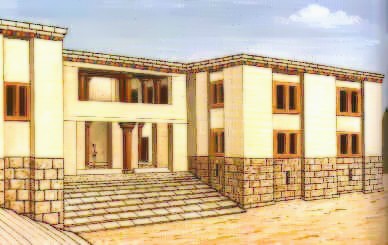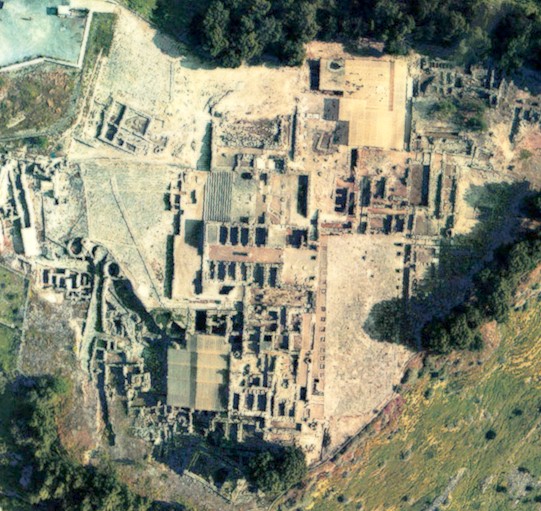The Palace of Phaistos
The hill of Phaistos was inhabited as early as the Final Neolithic
period (4500 - 3200 BC), when an extensive Neolithic settlement
was established, succeeded by a settlement of the
Prepalatial period (3200 - 4900 BC). These early
settlements were followed by the foundation of the
First Palace of Phaistos (1900- 1700 BC), which
was built on the NE part of the hill in order to
control the whole of the fertile plain of the Messara.
Around this palace arose, in the Minoan period, the
extensive city of Phaistos, which continued to flourish
until Hellenistic times (323-67 BC).

The Minoan palaces were centres of political, economic and
religious activity rather than simply residences of the elite.
Despite their labyrinthine form, they had a specific architectural
layout. The core of the various complexes was the large, open-air
Central Court, around which the wings were set. These were multi-
storey buildings with indented facades of coursed masonry monumental
gateways, luxurious rooms with hypostyle halls, polythyra, light-wells and
open balconies.
The First Palace was built around 1900 BC. It was extensive, covering an
area of approximately 8.000 sq.m, and spread over the three stepped terraces of
the hill. It was inhabited for about two and a half centuries, during the course of which it was destroyed and rebuilt three times, and was destroyed for the last time by earthquake in about 1700 BC. After the final destruction, its ruins were covered in a thick
layer of lime mixed with clay and pebbles, on which the New Palace was built.
The New Palace was smaller in size but more monumental than the Old Palace. It was destroyed in 1450 BC, as were most Minoan centres. The New Palace of Phaistos was not rebuilt after its destruction. The city around it continued to be inhabited, flourishing in Geometric (800-700 BC) and Hellenistic (323-67 BC) times. Around 150 BC the city was destroyed by neighbouring
Gortys, which arose as the new power of south Crete.

1
2
3
4
5
6
7
8
9
10
11
12
13
14
15
1. The Upper Court
2. West Court - Theatral Area
3. Kouloures
4. West Facade
5. Propylaea
6. Magazine of the Giant Pithoi
7. West Magazines
8. West Wing Shrines
9. Central Court
10. North Wing
11. Peristyle
12. King's Megaron
13. Queen's Megaron
14. Northeast complex
15. East Court and the workshop complex